Indonesian food is both incredibly diverse and also incredibly boring at the same time. Initial impressions are amazing, but after a few days it all seems the same (Satay, Nasi Goreng and Mie Goreng). But if you persevere, it becomes really interesting again.
Satay is the first thing that you will likely find and fall in love with. Simple meat skewers, cooked over coals and served with a spicy peanut sauce poured all over the top.
It is a national dish conceived by street vendors and is practically everywhere but be warned, the quality varies dramatically.
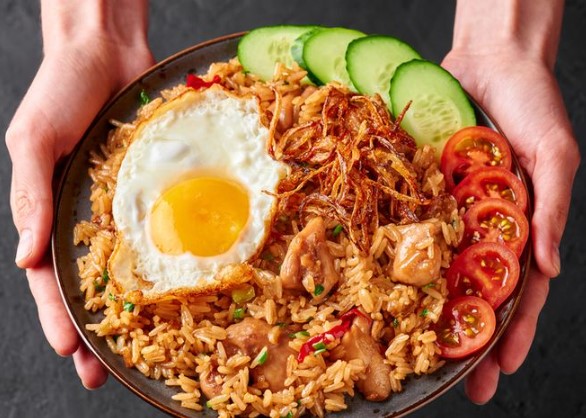
Nasi Goreng is a basic fried rice with a fried egg on top. A breakfast staple and perfectly acceptable.
Mie Goreng is identical to Nasi Goreng, but made with noodles instead.
Equally as tasty and equally ubiquitous.
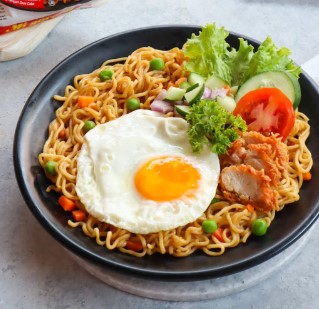
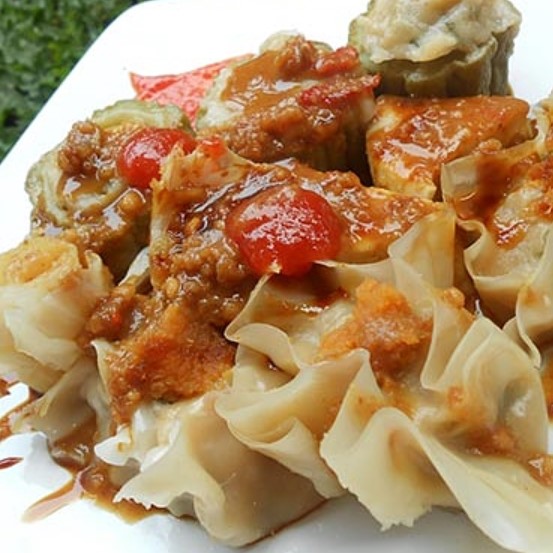
Siomay is Indonesia’s version of dim sum but nowhere near as good. This version contains steamed fish dumplings, with potato, cabbage, and egg, all served with peanut sauce.
Usually sold on the streets from a bicycle vendor with a large steamer at the back of his bike.
Gado Gado is a vegetable salad served with the magic peanut sauce.
Some come deconstructed and others come as a sticky mess. Most have boiled eggs and tempeh (fermented soy bean cake).
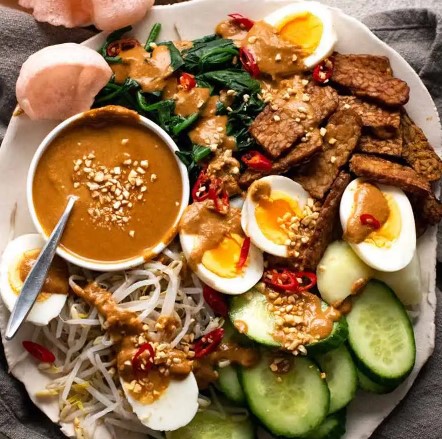
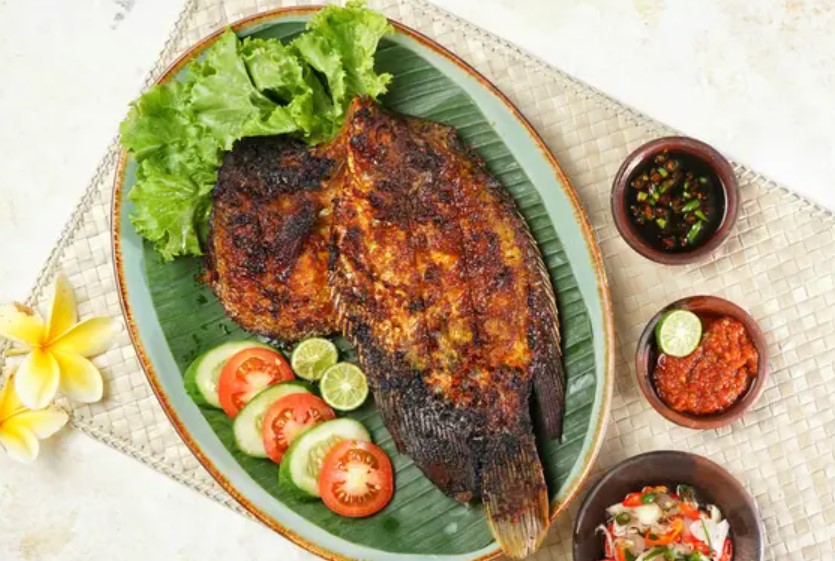
Ikan Bakar is everywhere. It is basically just grilled fish with a spicy marinade and an even spicier side sauce.
This is where many people run out, and while they are all fine, the Mie or Nasi Goreng breakfasts every day do tend to wear a bit thin. Indonesian food does typically tend to be quite spicy, so those seeking to lessen the chilli impact tend to settle for these safer choices. But if you box on and delve a little deeper into the cuisine, it gets interesting again.
Beef Rendang is ubiquitous throughout the region but originated in Sumatra, Indonesia (although my previous forays were always in Malaysia).
It is essentially beef, slow cooked in coconut milk with a bunch of chilli and spices.
And it is delicious.
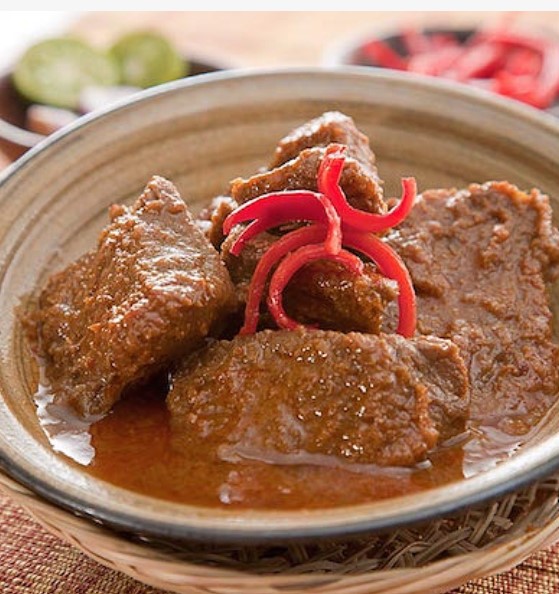
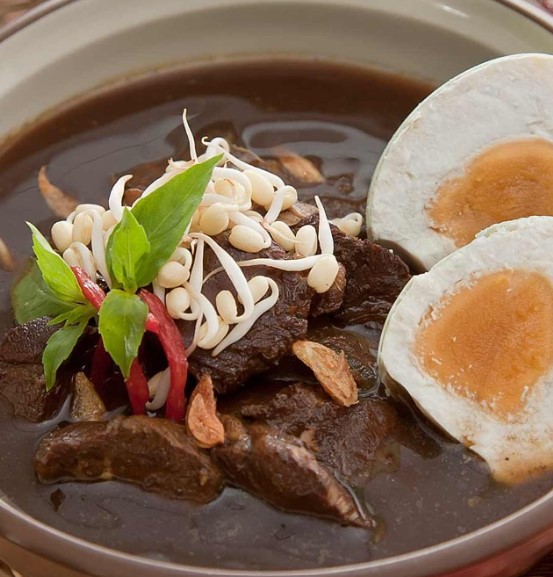
Nasi Rawon is a beef stew with a nutty flavour and a deep, black color from the use of keluak nut.
It is rich in flavor and is generally eaten with a bowl of rice (big surprise there).
Sop Buntut is basically just an oxtail soup.
The Indonesian version is as popular as ever and is a healthy and hearty soup.
The oxtail is usually fried or barbecued before being combined with the soup base.
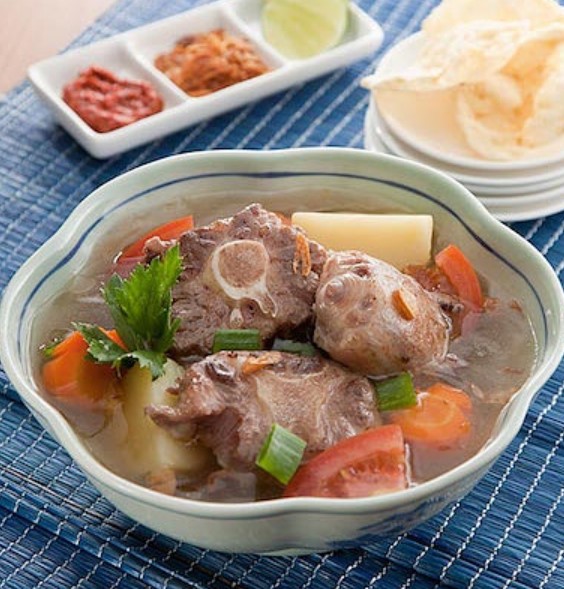
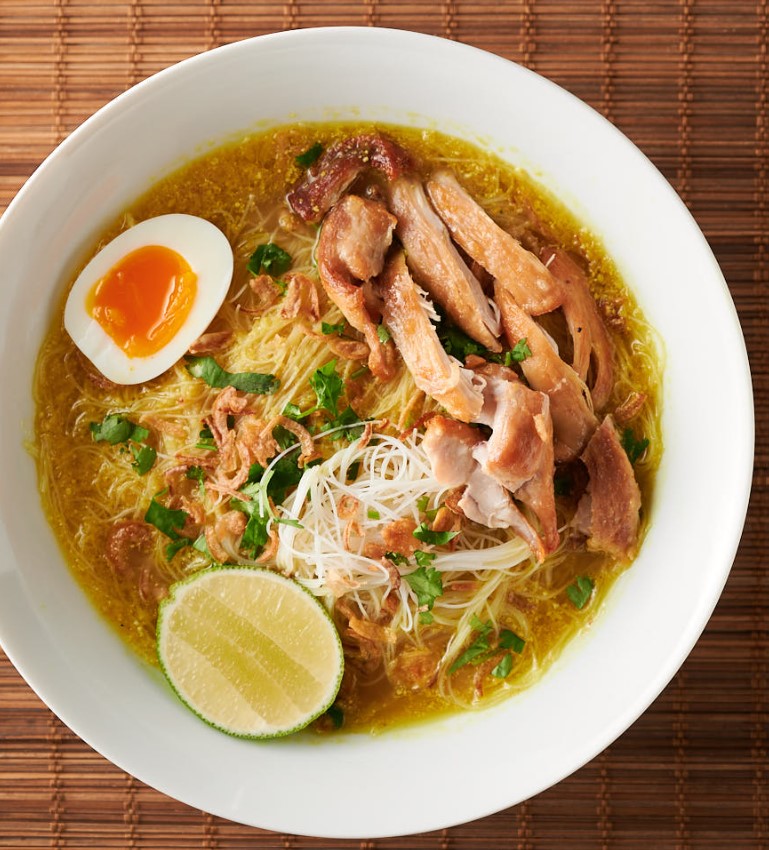
While on soups, the Soto Ayam is the local version of a basic Chicken soup.
Super simple and tasty and filled out with vermicelli noodles.
Bakso is the local meatball noodle soup.
Usually sold out of a pushcart on the street means that you can expect to get your fill for a couple of dollars.
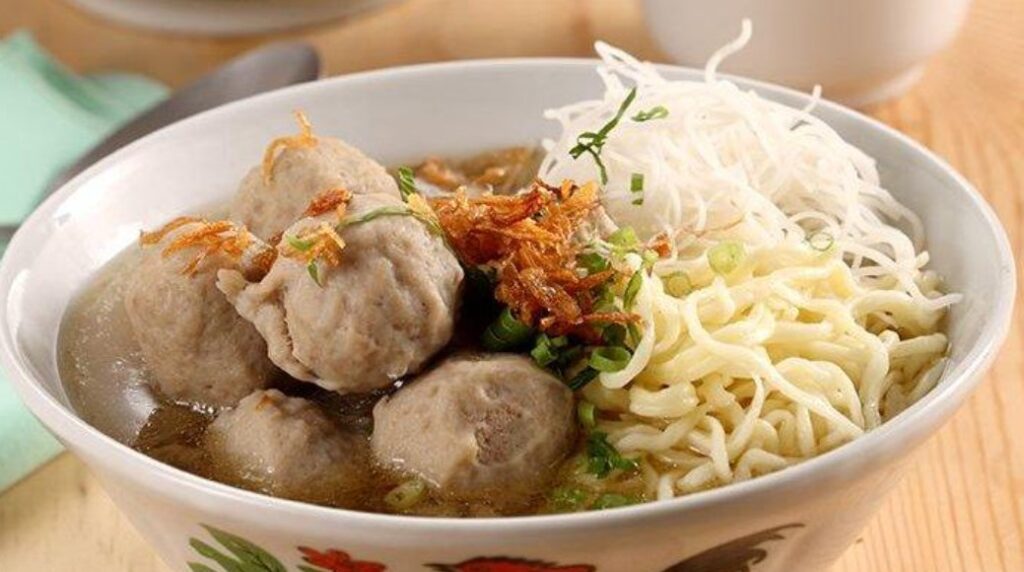
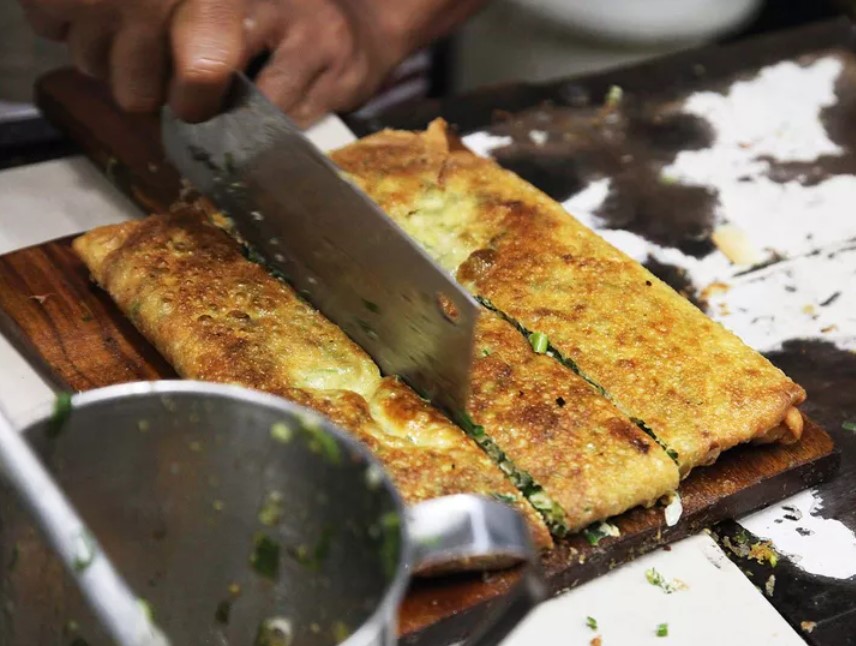
Martabak – in Indonesia, there are two types of martabak, namely salted/egg martabak which is made from a mixture of eggs and meat , and sweet martabak, which is usually filled with chocolate and goats cheese (Jill’s favourite).
Nasi campur literally just means mixed rice. But in Indonesia it refers to rice with a variety of Chinese meats like char siu, pork belly, roast chicken, or egg, all served with sweet tangy sauce.
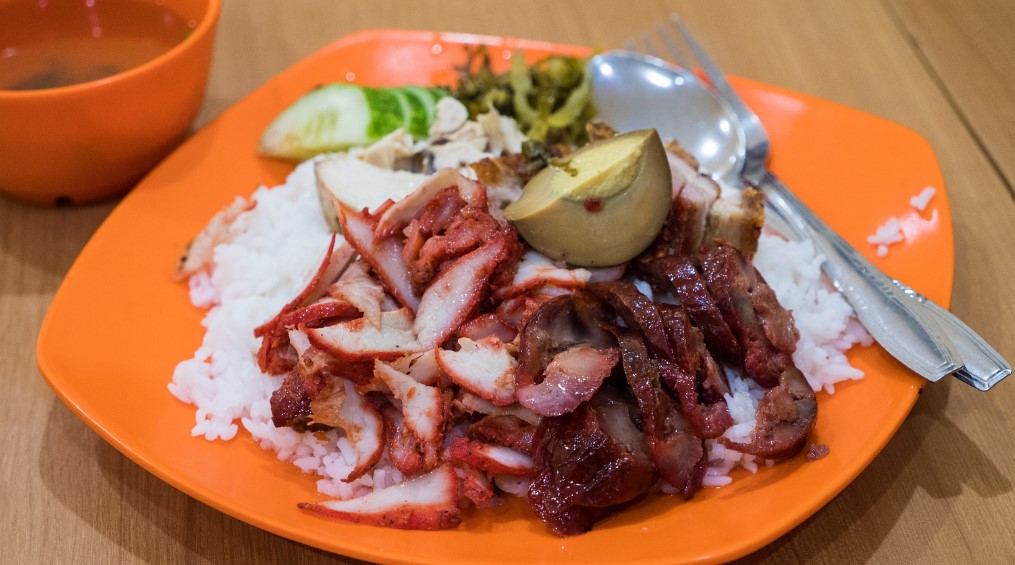
Typical side dishes
Sambal, this is on every plate, all the time, Tempe is next and has already been mentioned, the next most obvious is the water spinach that accompanies almost everything, Singkong (chips made of Cassava rather than potato). Acar is a mixed vegetable pickle (cabbage, carrots or beans, shallots that are heavily spiced with chilis), Krupuk is the prawn cracker type thing that you are used to, Lemang is a coconut sticky rice (typically cooked in bamboo over fire).





And of course my favourite, Belado (a spicy blend of ground red chilies, shallots or onions, garlic, tomato, tamarind, sugar, and salt). Belado means hot and spicy. Usually served on eggs as Telur Belado but also smeared on almost everything (the crispy tempe was particularly good). This became my regular daily breakfast.
A long story short, if you cannot find a great meal in Indonesia, you are not trying. Everything is easily available from your local Warung (roadside stall) and you will pay very little for it. But if you really need to eat what you know, then (as long as you stay on the beaten path) there are western options everywhere you look in the tourist hubs. These quickly disappear once you get off the beaten path though.